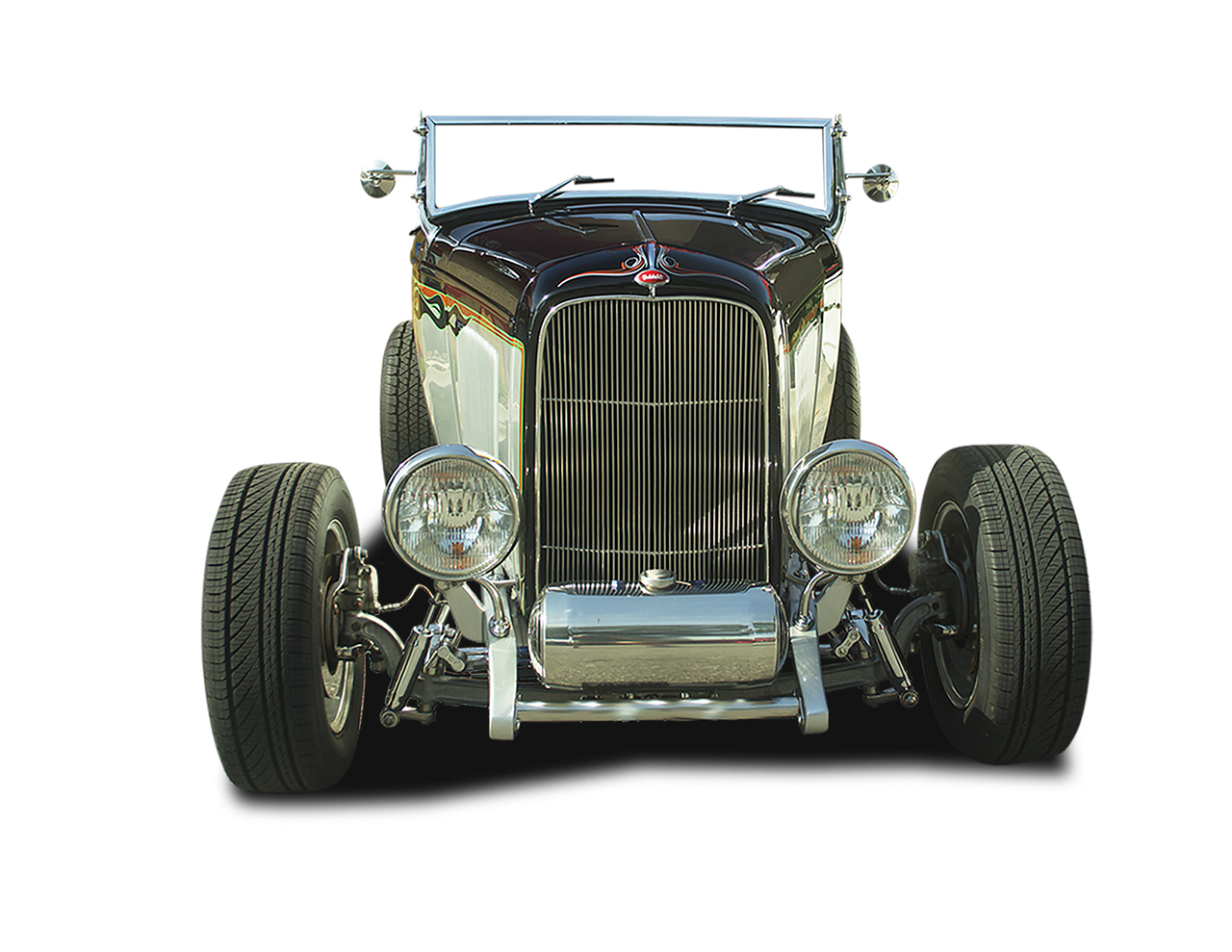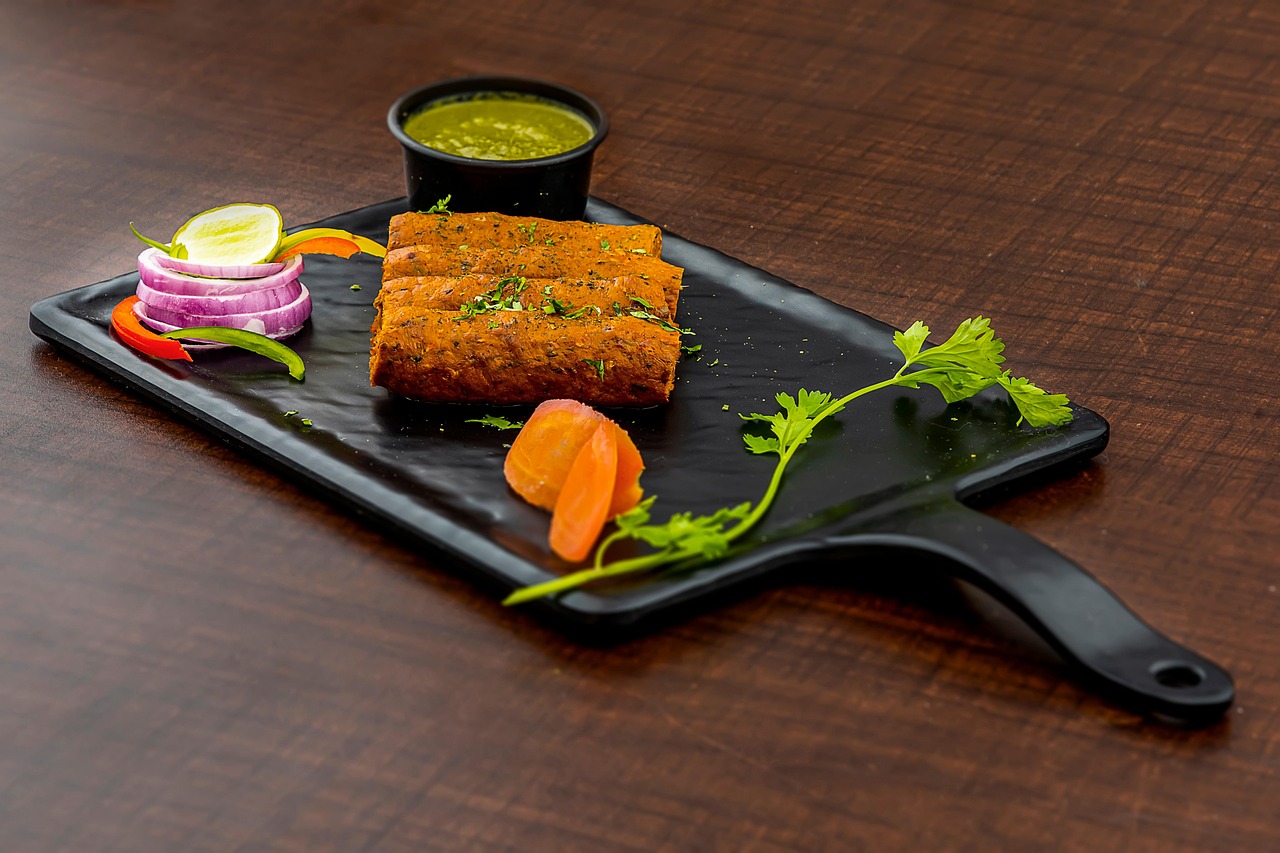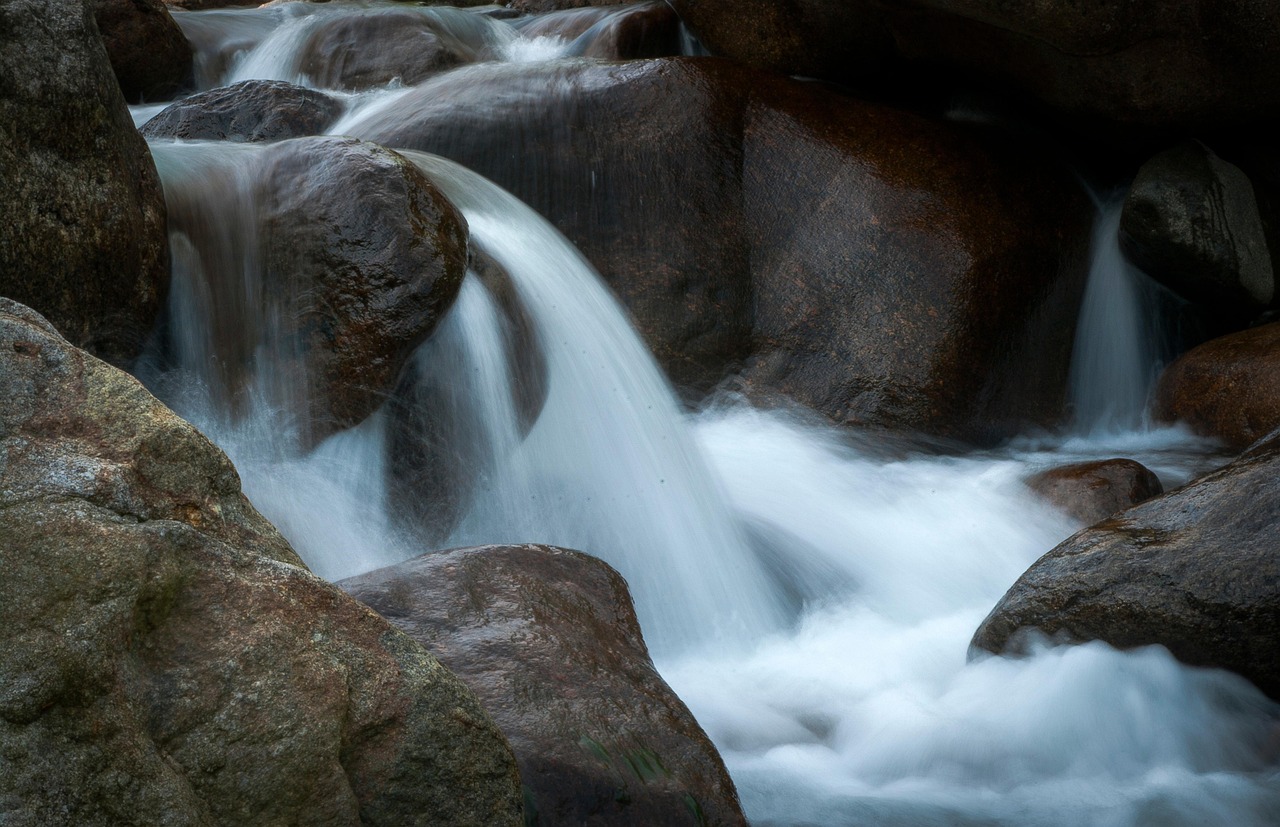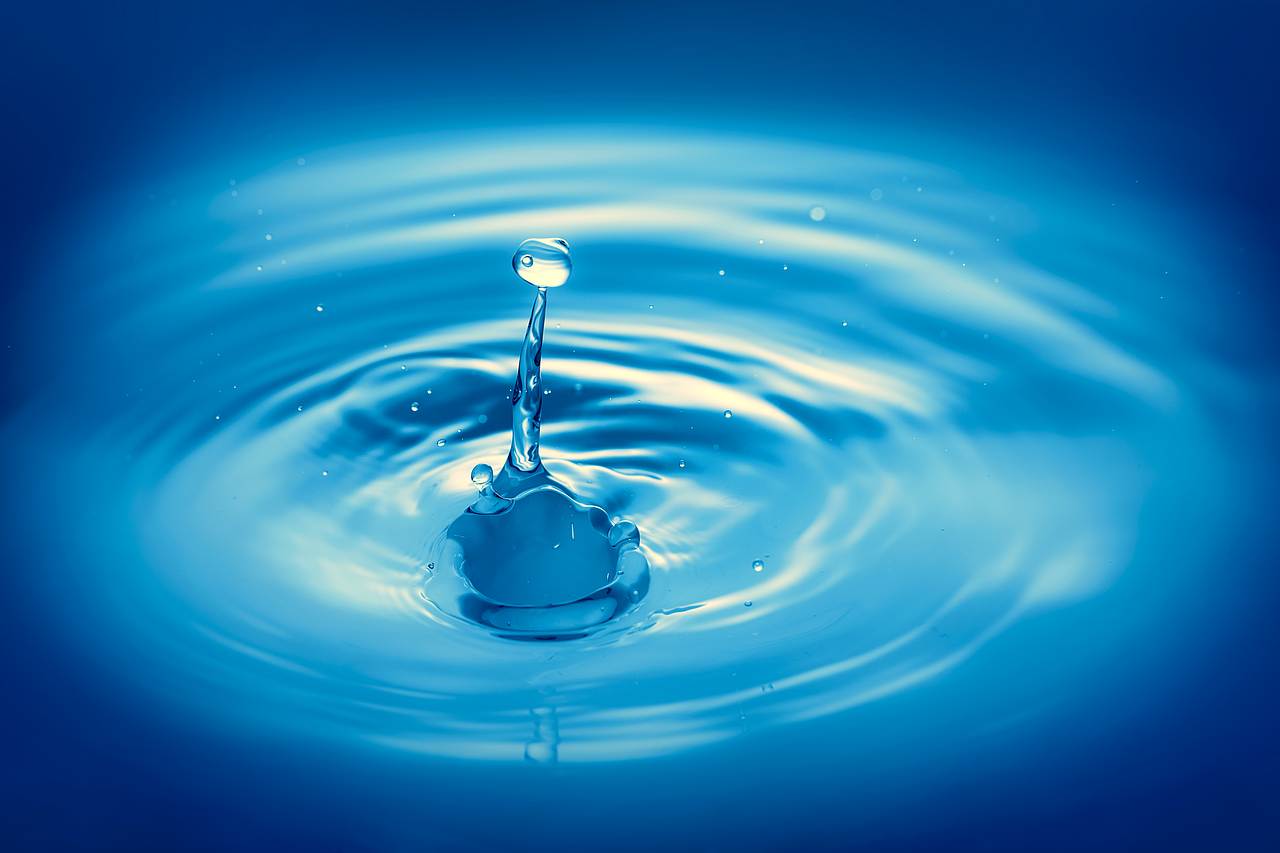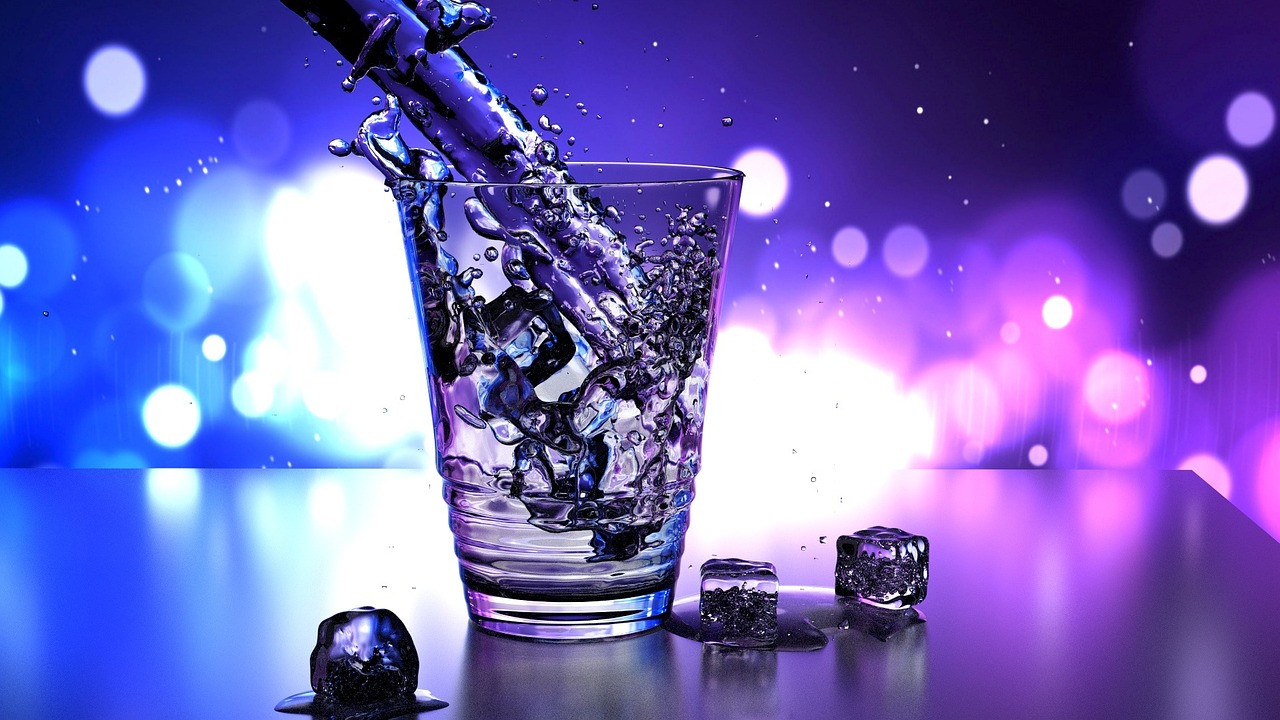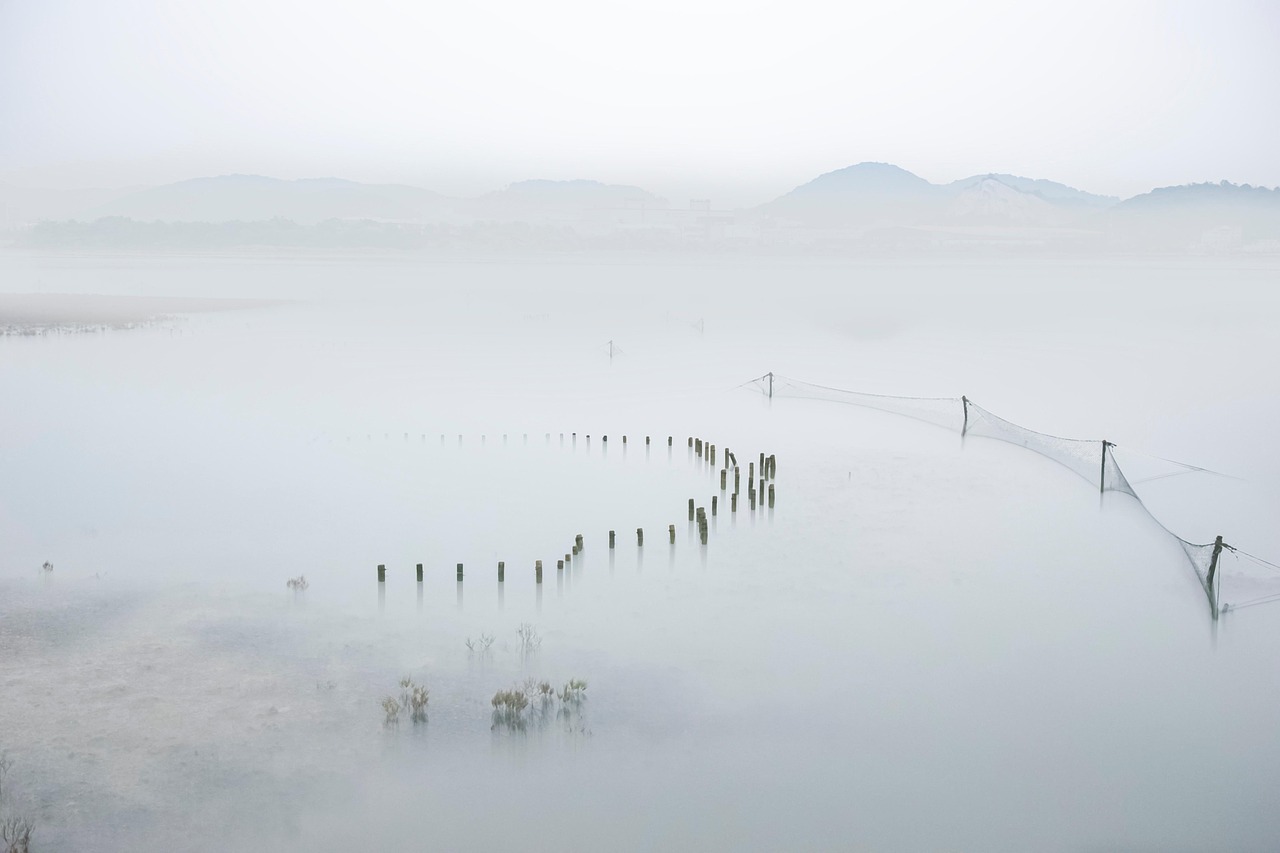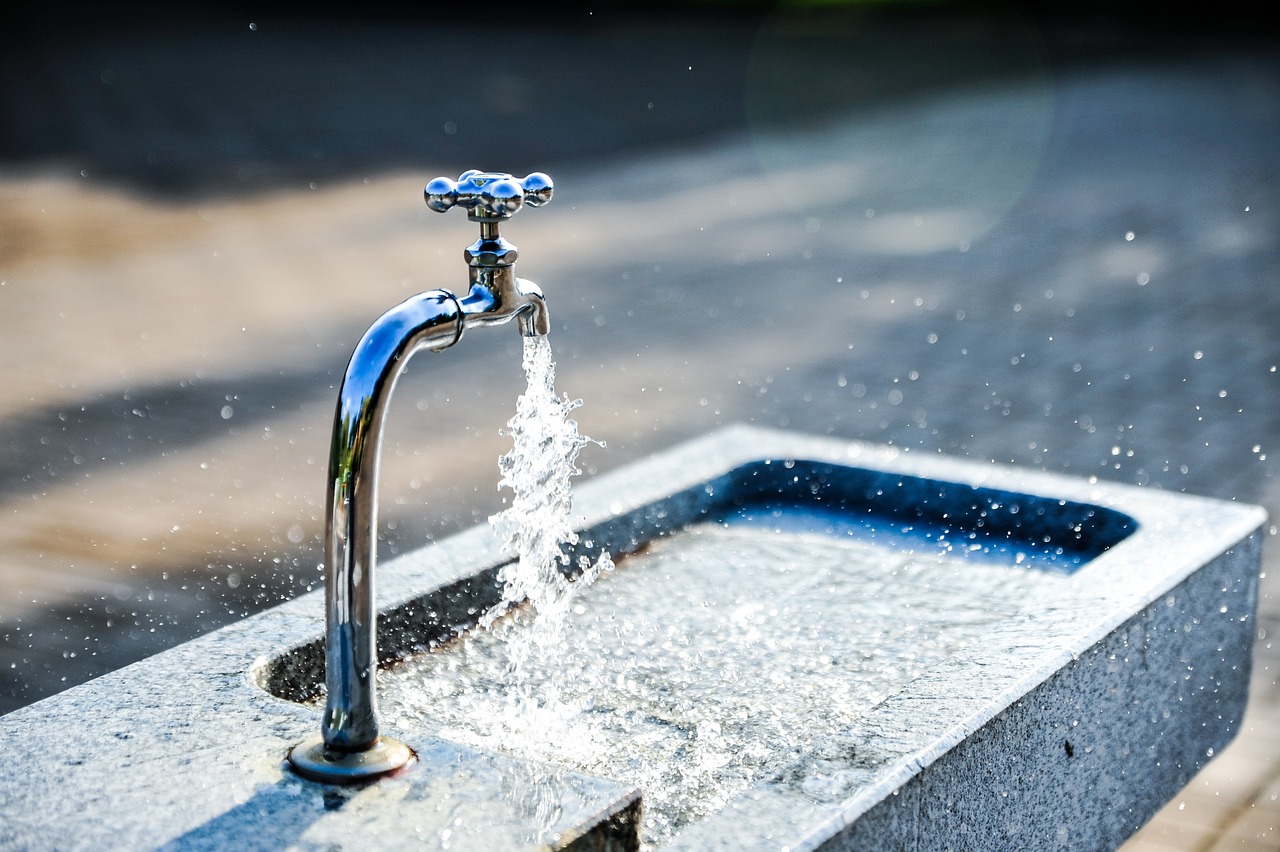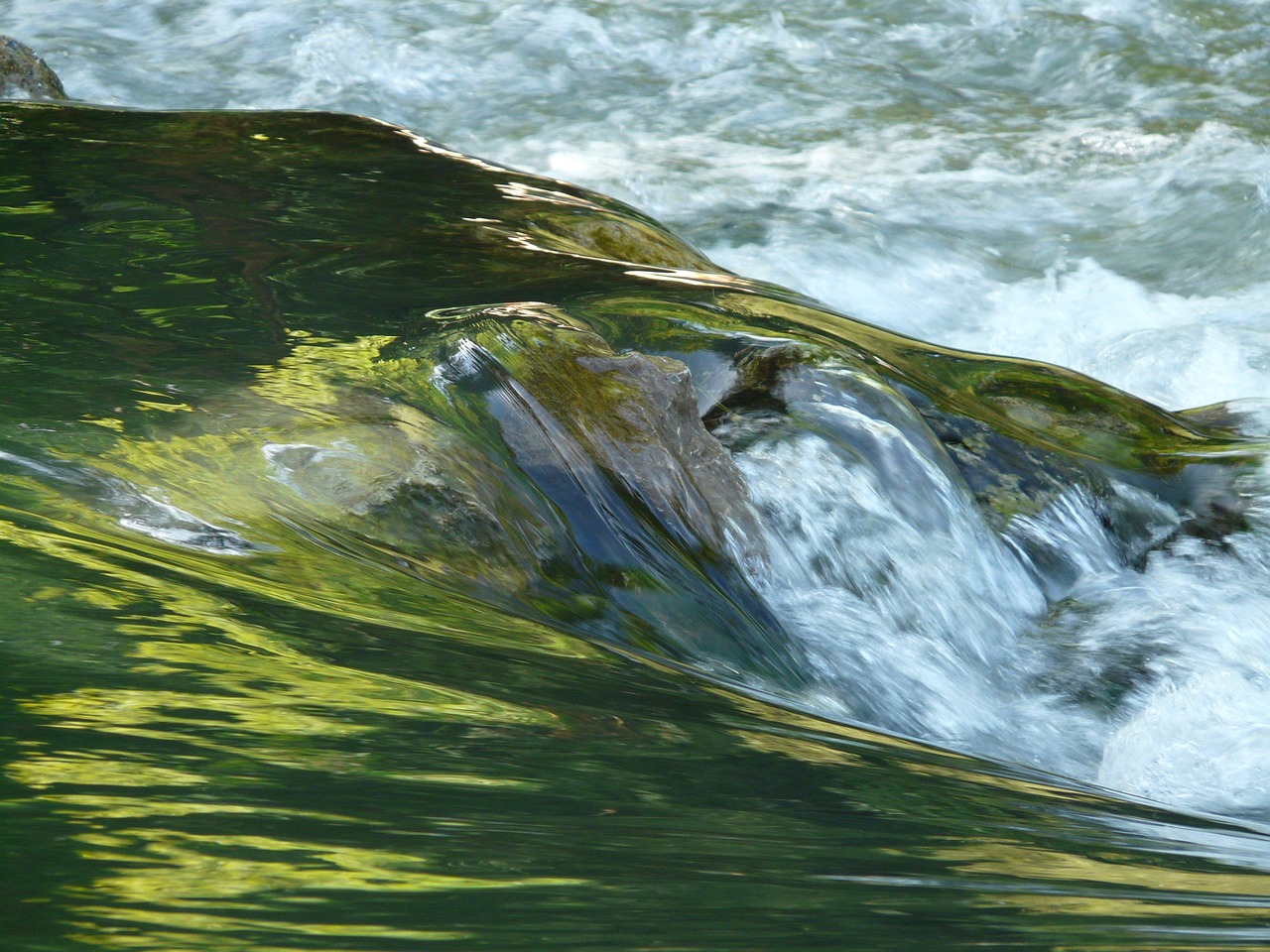This article delves into the scientific principles behind boiling water, examining whether warm or cold water reaches its boiling point more quickly. In addition, it addresses common misconceptions and provides practical insights for everyday cooking.
The Science of Boiling Water
To understand the boiling process, we must look at the relationship between temperature and pressure. As water heats up, its molecules gain energy and move faster, eventually reaching a point where they transition from liquid to gas. This transition is influenced by the surrounding pressure, which can vary based on altitude.
Why Temperature Matters
The initial temperature of the water plays a crucial role in how quickly it reaches its boiling point. Warm water, already at a higher temperature, requires less energy to reach boiling compared to cold water. This is a fundamental principle in thermodynamics that affects molecular movement and energy levels within the liquid.
Understanding Heat Transfer
- Conduction: This is the process where heat is transferred through direct contact. The effectiveness of conduction can vary based on the materials used in cookware. For instance, metals like copper and aluminum conduct heat better than ceramic.
- Convection: Involves the movement of water molecules, creating currents that enhance heat distribution. This dynamic can significantly influence boiling rates, as it helps to evenly distribute heat throughout the water.
- Radiation: Although less relevant in typical boiling scenarios, radiation can also play a role in heat transfer, particularly in microwaves.
Energy Requirements for Boiling
The energy needed to raise the temperature of water to its boiling point is a critical factor in determining boiling times. This energy, known as heat capacity, varies with the water’s temperature and purity, affecting how quickly it can boil.
Common Misconceptions About Boiling Water
There are numerous misconceptions surrounding the boiling process. A prevalent myth is that cold water boils faster than warm water. In reality, scientific evidence indicates that warm water typically reaches its boiling point more quickly due to its higher starting temperature.
Factors Influencing Boiling Times
Several factors can significantly affect how long it takes for water to boil:
- Altitude: At higher altitudes, the atmospheric pressure is lower, which can cause water to boil at lower temperatures.
- Purity of Water: The presence of impurities can alter the boiling point of water, affecting boiling times.
- Type of Heat Source: Different heat sources, such as gas, electric, or induction, can impact how quickly heat is transferred to the water.
Practical Tips for Boiling Water Efficiently
To maximize efficiency when boiling water, consider the following strategies:
- Choosing the Right Cookware: Select pots made from materials that conduct heat effectively, such as stainless steel or copper.
- Using Lids to Speed Up Boiling: Covering a pot with a lid helps trap heat and steam, significantly reducing the time it takes for water to reach boiling point.
Real-World Applications of Boiling Water Knowledge
Understanding the principles of boiling water has practical implications in various fields, including:
- Cooking Techniques: Methods like blanching and steaming depend on effective boiling techniques to achieve desired results.
- Scientific Experiments: Boiling water is often used in experiments to illustrate principles of thermodynamics and phase changes.
By grasping the scientific principles behind boiling water, individuals can make informed decisions that enhance their cooking and scientific endeavors. This knowledge not only helps in the kitchen but also enriches our understanding of fundamental physical processes.
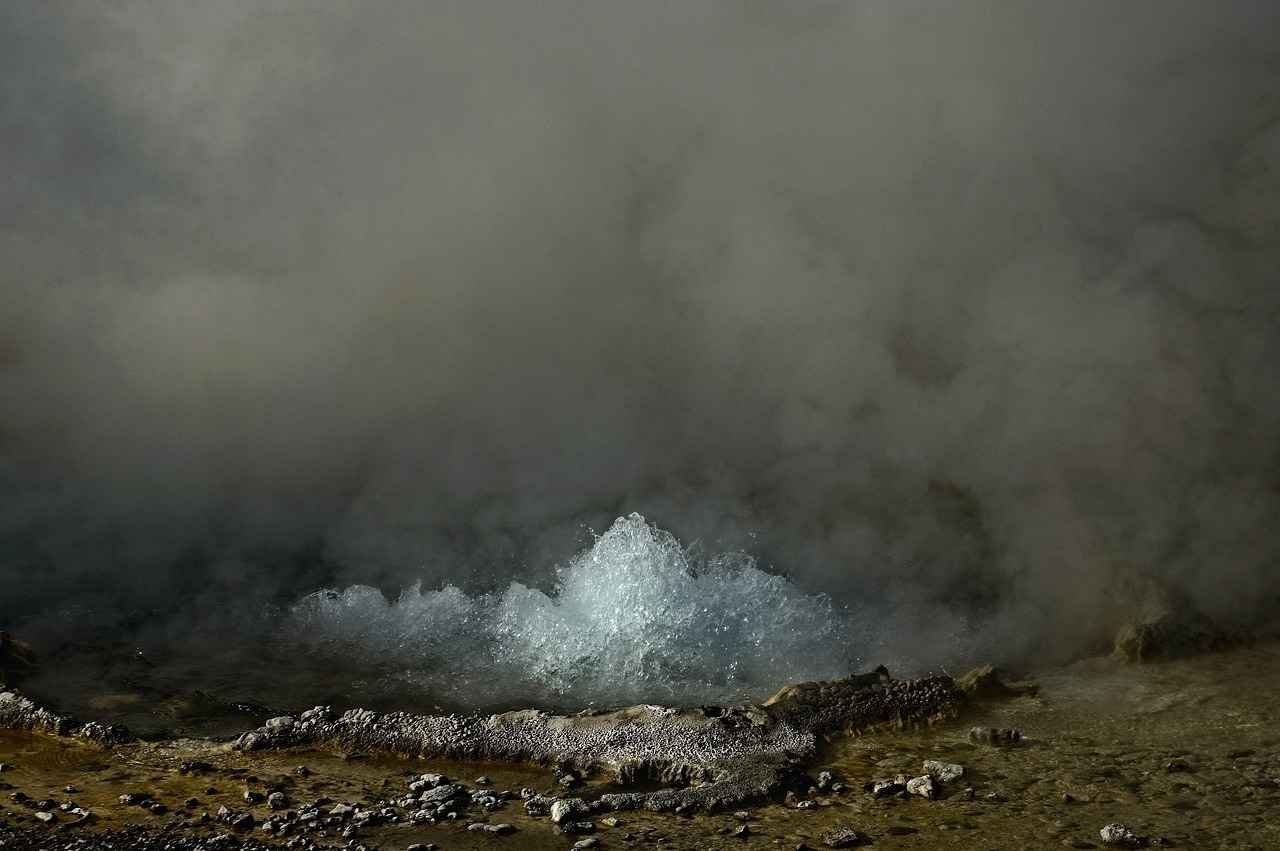
The Science of Boiling Water
Boiling water is a fundamental process that occurs in many daily activities, from cooking to industrial applications. Understanding the science behind boiling is essential for optimizing these processes. This section delves into the intricacies of boiling water, focusing on the relationship between temperature and pressure, as well as the energy dynamics involved in the transition of water molecules from a liquid to a gaseous state.
At its core, boiling occurs when a liquid’s vapor pressure equals the external pressure surrounding it. For water, this means that as it heats up, the kinetic energy of its molecules increases, allowing them to escape from the liquid phase into the gas phase. The boiling point of water is typically defined as 100°C (212°F) at standard atmospheric pressure (1 atm). However, this point can shift based on altitude and other environmental factors.
Temperature is a critical factor in the boiling process. As water is heated, the molecules move faster, and their energy levels increase. This increase in energy is vital for overcoming the intermolecular forces that hold the water molecules together in the liquid state. When the temperature reaches the boiling point, the water molecules have enough energy to break free, resulting in the formation of steam. Therefore, the relationship between temperature and the energy required for boiling is direct: higher temperatures lead to faster boiling.
Another important aspect to consider is pressure. At higher altitudes, atmospheric pressure is lower, which means that water will boil at a lower temperature. This phenomenon can significantly affect cooking times and methods, as recipes designed for sea level may not yield the same results at higher elevations. Understanding this relationship between pressure and boiling point can help individuals adjust their cooking techniques based on their location.
In addition to temperature and pressure, the energy requirements for boiling are crucial. The amount of energy needed to raise the temperature of water to its boiling point is quantified as the specific heat capacity. For water, this value is approximately 4.18 joules per gram per degree Celsius. This means that to raise the temperature of one gram of water by one degree Celsius, 4.18 joules of energy is required. When boiling, the energy input must not only raise the temperature but also provide the latent heat of vaporization, which is the energy required to convert water from liquid to gas at its boiling point.
Understanding the heat transfer mechanisms is also essential in the boiling process. Heat can be transferred through conduction, convection, and radiation. Conduction occurs when heat is directly transferred from a heat source to the pot or pan containing the water. The material of the cookware can significantly influence this process. For example, metals like copper and aluminum are excellent conductors, promoting faster boiling times.
Convection plays a vital role in distributing heat evenly throughout the water. As water at the bottom of the pot heats up, it becomes less dense and rises, while cooler, denser water descends to the bottom. This movement creates currents that help distribute heat more effectively, resulting in a more uniform boiling process.
In conclusion, the science of boiling water encompasses a complex interplay of temperature, pressure, and energy dynamics. By understanding these principles, individuals can make informed decisions that enhance their cooking efficiency and improve outcomes in various applications.

Why Temperature Matters
Temperature is a fundamental factor in the boiling process of water, influencing not only the rate at which it reaches its boiling point but also the efficiency of heat transfer. When discussing why temperature matters, it is essential to understand the molecular dynamics at play. As water temperature increases, the kinetic energy of the molecules also rises, leading to more vigorous movement. This increased movement is crucial in enabling water molecules to overcome intermolecular forces and transition into the gas phase.
The boiling point of water is typically set at 100 degrees Celsius (212 degrees Fahrenheit) at sea level. However, this point can vary based on atmospheric pressure; for instance, at higher altitudes, the boiling point decreases due to lower pressure. This relationship between temperature and pressure is vital in understanding how quickly water can boil. As the temperature of water approaches its boiling point, the molecules gain enough energy to break free from the liquid state.
To further illustrate the significance of temperature, let’s consider the concept of heat transfer. Heat transfer occurs through three main mechanisms: conduction, convection, and radiation. Each of these methods plays a role in how quickly heat is delivered to water. For instance, conduction is the heat transfer that occurs through direct contact with a heat source, such as a stove. The effectiveness of conduction can vary significantly based on the materials used in cookware; metals with higher thermal conductivity, like copper and aluminum, will heat water more efficiently than those with lower conductivity.
- Convection is another essential mechanism that involves the movement of water molecules. As water heats up, it becomes less dense and rises, while cooler, denser water sinks. This creates a circulation pattern that enhances heat distribution throughout the pot, leading to a more uniform heating process.
- Radiation plays a minor role in boiling water but can still contribute to overall heating, especially in situations where heat is applied from a distance.
Understanding these heat transfer mechanisms allows individuals to make informed decisions about how to boil water more efficiently. For example, using a pot with a wide base can increase the surface area in contact with the heat source, promoting faster boiling. Additionally, covering the pot with a lid can trap heat and steam, further accelerating the heating process.
Another aspect to consider is the energy required to boil water. The specific heat capacity of water is relatively high, meaning it requires a significant amount of energy to raise its temperature. This energy requirement is crucial in determining how quickly water can reach its boiling point. For practical purposes, starting with warm or hot water can reduce the time it takes to boil, as it requires less energy to reach the boiling point compared to starting with cold water.
In summary, temperature is a critical factor in the boiling process of water. It affects molecular movement, the efficiency of heat transfer, and the energy required to bring water to a boil. Understanding these principles can help individuals optimize their cooking methods and achieve better results in various culinary applications.
Understanding Heat Transfer
Understanding the mechanisms of heat transfer is essential for grasping how water boils. The efficiency of heat transfer is primarily governed by three mechanisms: conduction, convection, and radiation. Each of these processes plays a critical role in determining how quickly water reaches its boiling point.
Conduction is the transfer of heat through direct contact between materials. In the context of boiling water, this occurs when the heat source, such as a stove, directly heats the bottom of a pot. The effectiveness of conduction depends on the thermal conductivity of the materials involved. For example, metals like copper and aluminum have high thermal conductivity, allowing heat to transfer quickly, while materials like glass or ceramic are less effective, leading to longer boiling times.
Convection is a process where heated water molecules rise to the surface, while cooler molecules sink, creating a circular motion within the pot. This movement enhances heat distribution, allowing the water to heat up more uniformly. In a pot of water, once the bottom layer heats up, it rises, and cooler water moves down to take its place. This dynamic flow significantly speeds up the heating process, making convection a vital factor in boiling efficiency.
Radiation involves the transfer of heat through electromagnetic waves. While it plays a lesser role in boiling water compared to conduction and convection, it can still contribute to the overall heating process. For instance, if water is heated in an oven, the heat radiates from the oven walls and directly warms the water. Although less effective than conduction and convection, understanding radiation is important for comprehensive heat transfer analysis.
- Cookware Material: The choice of cookware can greatly influence heat transfer. Heavy-bottomed pots tend to distribute heat more evenly, while thin pots may create hot spots.
- Water Purity: Impurities in water can affect its boiling point and heat transfer properties. For example, adding salt can raise the boiling point, requiring more energy to reach boiling.
- Heat Source: The type of heat source (gas, electric, induction) can also impact how quickly heat is transferred to the water.
- Altitude: At higher altitudes, the atmospheric pressure is lower, which can lower the boiling point of water, affecting cooking times.
Recognizing how heat transfer works can lead to more efficient cooking practices. For example, using a lid on a pot can trap heat and steam, enhancing convection and reducing boiling time. Additionally, selecting the right cookware can optimize heat conduction, ensuring that water boils faster and more evenly.
In conclusion, understanding the various mechanisms of heat transfer—conduction, convection, and radiation—provides valuable insights into the boiling process. By considering factors such as cookware material, water purity, and heat source, individuals can significantly improve their cooking efficiency. This knowledge not only enhances culinary skills but also promotes a deeper appreciation for the science behind boiling water.
Conduction Explained
Conduction is a fundamental process of heat transfer that occurs when two objects at different temperatures come into direct contact. This mechanism is crucial in various applications, particularly in cooking, where the efficiency of heat distribution can significantly impact the outcome of a dish.
When discussing conduction, it is essential to consider the materials used in cookware. Different materials conduct heat at varying rates due to their physical properties. For instance, metals like copper and aluminum are known for their excellent thermal conductivity, allowing heat to transfer quickly and evenly across their surfaces. In contrast, materials such as glass or ceramic tend to have lower conductivity, which can result in uneven heating and longer cooking times.
To better understand how conduction works, let’s delve into the molecular level. When heat is applied to a pot on the stove, the molecules in the metal cookware begin to vibrate more intensely as they gain energy. These vibrating molecules then collide with adjacent molecules, transferring energy through direct contact. This chain reaction continues, ultimately heating the contents of the pot. The efficiency of this energy transfer is influenced by factors such as the surface area of contact and the temperature gradient between the cookware and the food or liquid inside.
| Cookware Material | Thermal Conductivity (W/m·K) | Heat Retention |
|---|---|---|
| Copper | 401 | Excellent |
| Aluminum | 237 | Good |
| Cast Iron | 50 | Very Good |
| Stainless Steel | 16 | Moderate |
| Glass | 1.1 | Poor |
In addition to the material, the design of the cookware also plays a role in conduction. Cookware with a thicker base can distribute heat more evenly, reducing the risk of hot spots that can lead to burning or uneven cooking. Furthermore, the shape of the cookware can affect how heat circulates within it, which is particularly important when boiling water or simmering sauces.
Another important aspect of conduction is the impact of temperature. The greater the temperature difference between the heat source and the cookware, the faster the heat will transfer. This principle is why a pot placed on a high flame will heat up more quickly than one on a low flame. However, it is crucial to balance heat levels to avoid damaging the cookware or compromising the food being prepared.
In conclusion, conduction is a vital process that influences cooking efficiency and effectiveness. By understanding the materials and designs that optimize heat transfer, cooks can enhance their culinary skills and achieve better results in the kitchen. Whether you are a novice cook or an experienced chef, leveraging the principles of conduction can lead to more delicious and perfectly cooked meals.
Convection Dynamics
Convection is a fundamental process in fluid dynamics that significantly influences the behavior of liquids, particularly water, during heating. This phenomenon refers to the movement of water molecules, which creates currents that facilitate the distribution of heat throughout the liquid. Understanding convection is essential for grasping how boiling occurs and why certain factors can enhance or hinder the boiling process.
When water is heated, the molecules at the bottom of the container gain energy and begin to move more rapidly. This increase in kinetic energy causes these molecules to become less dense and rise to the surface. As they ascend, cooler, denser water molecules move down to take their place, creating a continuous cycle known as convection currents. This movement not only promotes uniform heating but also plays a crucial role in determining the overall boiling rate of the water.
In practical terms, the efficiency of convection can be influenced by several factors:
- Container Shape: The shape of the pot or kettle can affect how effectively the heat is distributed. Wider bases may promote better convection currents compared to narrow ones.
- Heat Source: The type of heat source, whether it be electric, gas, or induction, can impact how quickly heat is transferred to the water, thereby affecting the convection process.
- Water Volume: Larger volumes of water may take longer to reach a boil due to the increased mass that must be heated, although convection can still help distribute heat more evenly.
Interestingly, the initial temperature of the water also plays a significant role in how quickly it boils. Warm water, having already absorbed some heat, can create stronger convection currents compared to cold water, which must first undergo a significant temperature change. This leads to the common misconception that cold water might boil faster; however, the dynamics of convection demonstrate that warm water can often reach boiling point more quickly.
Furthermore, the presence of impurities in the water can also affect convection. For example, dissolved minerals or particles can alter the density of water, potentially disrupting the flow of convection currents. This can lead to uneven heating and longer boiling times.
In summary, convection is a vital aspect of the boiling process that enhances heat distribution in water. By understanding the dynamics of convection, individuals can optimize their boiling techniques, whether for cooking purposes or scientific experiments. Recognizing the importance of container shape, heat source, and initial water temperature can lead to more efficient boiling practices, ensuring that water reaches its boiling point as swiftly as possible.
Energy Requirements for Boiling
When we consider the process of boiling water, one of the most significant factors is the energy required to raise the temperature of water to its boiling point. This energy, known as heat, plays a pivotal role in determining how quickly water can transition from a liquid to a gas. Understanding this concept can help us appreciate the intricacies of boiling and its practical implications.
The specific heat capacity of water is a critical aspect of this energy requirement. Water has a high specific heat capacity, which means it requires a considerable amount of energy to increase its temperature. Specifically, it takes approximately 4.18 joules of energy to raise the temperature of one gram of water by one degree Celsius. Therefore, when starting with cold water, a substantial amount of energy must be applied to achieve the boiling point of 100 degrees Celsius at standard atmospheric pressure.
To illustrate this, consider the following table that compares the energy needed to bring different volumes of water to a boil:
| Volume of Water (liters) | Energy Required (kilojoules) |
|---|---|
| 1 | 17.6 |
| 2 | 35.2 |
| 3 | 52.8 |
This table highlights that as the volume of water increases, so does the energy requirement to reach boiling. This relationship is crucial for anyone looking to boil water efficiently, whether for cooking or scientific purposes.
Another important aspect to consider is the initial temperature of the water. If you start with warm water, it already contains some energy, thus requiring less additional energy to reach the boiling point compared to cold water. This phenomenon leads to the common misconception that cold water might boil faster than warm water. In reality, warm water typically reaches boiling point more quickly due to its higher initial energy content.
Furthermore, the method of heating water also influences the energy dynamics involved in boiling. Different heat transfer mechanisms, including conduction, convection, and radiation, can affect how quickly energy is transferred to the water. For instance, using a pot with a flat bottom on a high-heat stove can enhance conduction, allowing heat to be more efficiently transferred to the water.
Additionally, the presence of impurities in the water can alter its boiling point and heat capacity. For example, adding salt to water raises its boiling point, requiring even more energy to reach the boiling stage. This principle is often applied in cooking, where salt is used to enhance flavor while also influencing boiling times.
In conclusion, understanding the energy requirements for boiling water is essential for optimizing cooking methods and scientific experiments. By recognizing the relationship between temperature, energy, and the properties of water, individuals can make informed choices that lead to more efficient boiling practices.
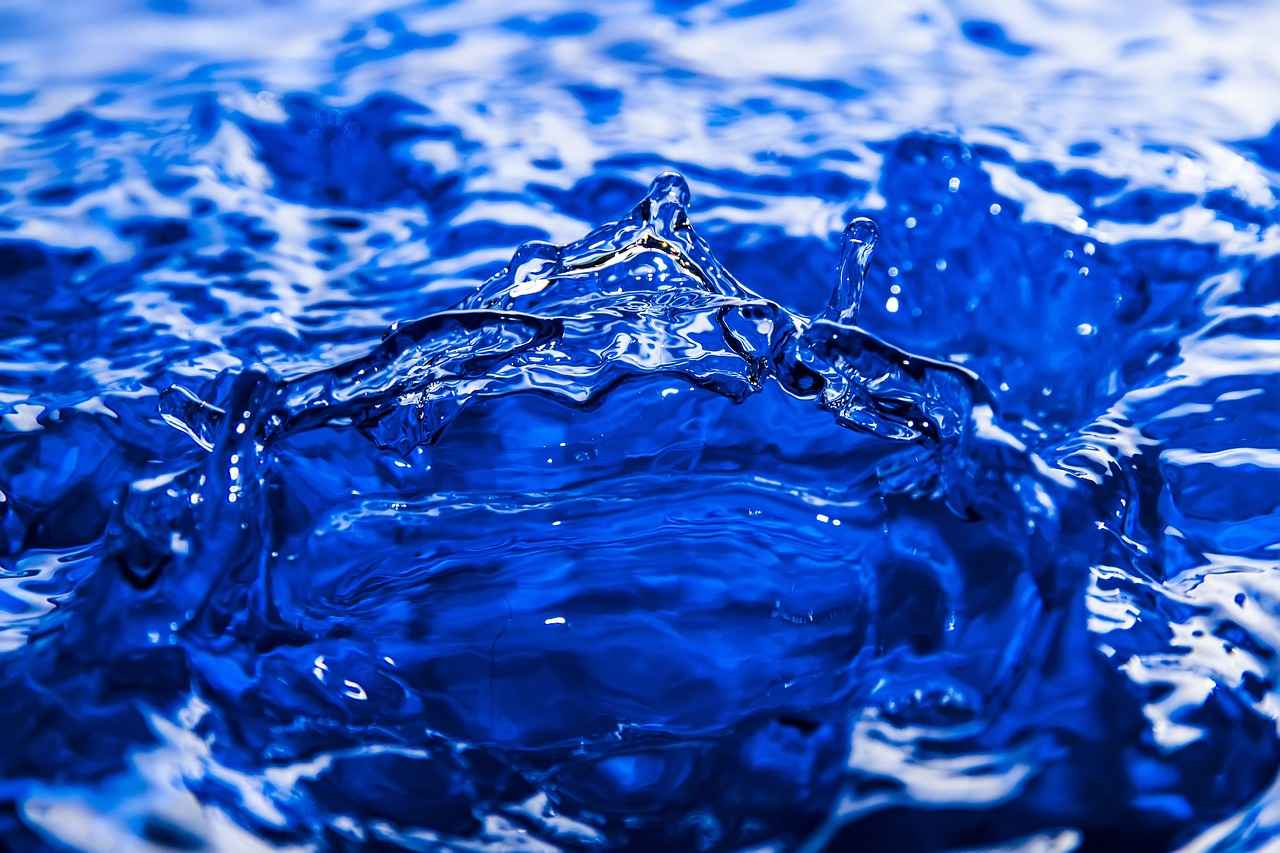
Common Misconceptions About Boiling Water
When it comes to boiling water, there are numerous misconceptions that can lead to confusion and inefficiency in both cooking and scientific practices. One of the most prevalent myths is the belief that cold water boils faster than warm water. This article aims to clarify this misconception and provide a deeper understanding of the boiling process.
The notion that cold water can boil faster than warm water often stems from anecdotal experiences or misinterpretations of scientific principles. In reality, the temperature of the water significantly influences how quickly it reaches its boiling point. When water is heated, its molecules begin to move faster as they gain energy. This increased molecular movement is what ultimately leads to boiling. Thus, it is evident that starting with warm water allows for a quicker transition to boiling.
Understanding the Science Behind Boiling
The boiling point of water is defined as the temperature at which the vapor pressure of the liquid equals the surrounding atmospheric pressure. At this point, water molecules have enough energy to break free from the liquid state and become gas. Therefore, the initial temperature of the water plays a crucial role in determining how rapidly it can achieve this state. Cold water, starting at a lower temperature, naturally takes longer to reach the boiling point compared to warm water.
Factors Influencing Boiling Times
- Altitude: At higher altitudes, the atmospheric pressure is lower, which means water boils at a lower temperature. This can affect cooking times and methods.
- Purity of Water: Impurities in water, such as minerals and salts, can alter its boiling point, causing variations in boiling times.
- Type of Heat Source: Different heat sources, whether gas, electric, or induction, can impact how efficiently heat is transferred to the water.
Debunking the Cold Water Myth
Many people believe that if they start with cold water, it will somehow boil faster due to the “temperature shock” concept. This idea is misleading. Scientific experiments consistently demonstrate that warm water reaches its boiling point more quickly than cold water. This is primarily due to the energy required to raise the temperature of the water molecules to the boiling point. Starting at a higher temperature reduces the amount of energy needed to achieve boiling.
Practical Tips for Boiling Water Efficiently
To maximize efficiency when boiling water, consider the following strategies:
- Use a Lid: Covering your pot with a lid traps heat and steam, significantly reducing the time it takes for water to boil.
- Choose the Right Cookware: Materials that conduct heat well, such as copper or stainless steel, can enhance heat distribution and speed up boiling times.
- Preheat Your Water: If you know you need boiling water for a recipe, starting with warm or hot tap water can save time.
Understanding the scientific principles behind boiling water not only helps in dispelling myths but also enhances cooking efficiency and effectiveness. By starting with accurate information, individuals can make informed decisions in both culinary and scientific endeavors.
Does Cold Water Boil Faster? Myth or Fact?
The question of whether cold water boils faster than warm water has puzzled many, leading to a variety of beliefs and misconceptions. This article delves into the scientific principles that govern the boiling process, addressing the reality behind this common myth.
Boiling occurs when a liquid reaches a temperature where its vapor pressure equals the surrounding atmospheric pressure. For water, this temperature is 100°C (212°F) at sea level. The energy required to transition water from a liquid to a gas is significant, and this energy is influenced by the initial temperature of the water.
When starting with warm water, the molecules are already in a state of higher energy compared to cold water. This means that they require less additional energy to reach the boiling point. In contrast, cold water must first absorb heat to increase its temperature before it can begin to boil. Therefore, warm water typically reaches boiling point more quickly than cold water.
Research has shown that the idea of cold water boiling faster is a myth. A study conducted by scientists at the University of Cambridge demonstrated that warm water boils faster due to its higher starting temperature. This finding aligns with the principles of thermodynamics, which state that energy transfer rates are affected by temperature differences.
- Altitude: At higher altitudes, the boiling point of water decreases due to lower atmospheric pressure, which can affect boiling times.
- Purity of Water: Impurities in water can alter its boiling point, thus influencing how quickly it boils.
- Heat Source: The type and intensity of heat applied can significantly impact boiling times.
To optimize boiling times, consider the following strategies:
- Use a Lid: Covering your pot with a lid can trap heat and steam, accelerating the boiling process.
- Choose the Right Cookware: Materials with good heat conductivity, such as copper or aluminum, can enhance heat transfer to the water.
- Start with Warm Water: Whenever possible, begin with warm or hot water to reduce the overall time needed to reach boiling.
Understanding the principles behind boiling water is not only essential for cooking but also plays a crucial role in various scientific and industrial processes. For instance, in laboratories, boiling water is often used to sterilize equipment and prepare solutions, while in cooking, techniques like blanching and steaming rely heavily on effective boiling methods.
In summary, the notion that cold water boils faster than warm water is a myth. Scientific evidence clearly indicates that warm water reaches its boiling point more quickly due to its higher initial energy state. By understanding the science behind boiling, individuals can make informed decisions that enhance both their cooking efficiency and scientific endeavors.
Factors Influencing Boiling Times
Boiling water is a fundamental process in cooking and various scientific applications. However, many people are unaware that several factors can influence the time it takes for water to reach its boiling point. Understanding these factors not only enhances cooking efficiency but also provides insights into scientific practices.
Altitude is one of the most significant factors affecting boiling times. At higher altitudes, the atmospheric pressure is lower, which means water boils at a lower temperature. For instance, at sea level, water boils at 100°C (212°F), but at an altitude of 2,000 meters (about 6,561 feet), it boils at approximately 93.4°C (200°F). This lower boiling point can lead to longer cooking times, as food may not cook as thoroughly as it would at sea level.
The purity of water also plays a crucial role in boiling times. Impurities such as minerals and salts can elevate the boiling point of water, a phenomenon known as boiling point elevation. For example, adding salt to water raises its boiling point, which can be beneficial for certain cooking techniques, but it may also increase the time it takes to reach that boiling point. Conversely, distilled water, which is free from impurities, will boil at a temperature closer to the standard 100°C (212°F).
Another important factor is the type of heat source used to heat the water. Different heat sources, such as gas stoves, electric burners, or induction cooktops, can transfer heat at varying rates. For instance, induction cooktops tend to heat water more quickly due to their efficient heat transfer mechanism, while traditional gas stoves may take longer due to less efficient heat conduction. The size and shape of the pot also matter; a wider pot allows for more surface area exposure, leading to faster boiling.
Additionally, the initial temperature of the water can significantly impact boiling times. Starting with warm or hot water will naturally reduce the time needed to reach boiling compared to starting with cold water. This is an important consideration for those looking to save time in the kitchen.
Another factor to consider is the amount of water being heated. Larger volumes of water will require more energy and time to reach the boiling point compared to smaller amounts. Thus, if you’re in a hurry, boiling smaller quantities can be a practical approach.
Lastly, the use of lids on pots can significantly affect boiling times. Covering a pot traps heat and steam, creating a higher pressure environment that speeds up the boiling process. This simple adjustment can cut down on cooking times considerably.
In summary, understanding the various factors that influence boiling times—such as altitude, water purity, heat source, initial water temperature, volume, and the use of lids—can greatly enhance your cooking efficiency. By applying this knowledge, you can optimize your cooking practices and achieve better results in both culinary and scientific endeavors.

Practical Tips for Boiling Water Efficiently
When it comes to boiling water, efficiency is key, whether you’re preparing a meal or conducting a scientific experiment. By implementing certain strategies, you can significantly reduce the time it takes to reach the boiling point. Below are some practical tips to help you maximize efficiency when boiling water.
- Choose the Right Cookware: The material and shape of your cookware can greatly influence boiling times. Stainless steel and copper pans are excellent conductors of heat, allowing water to boil more quickly. Additionally, using a pot with a wide base increases the surface area for heat transfer.
- Use a Lid: Covering your pot with a lid traps heat and steam inside, which can reduce boiling time by up to 50%. This simple step is often overlooked but can make a significant difference in efficiency.
- Start with Hot Water: If you begin with hot tap water instead of cold, you can cut down on the time it takes to boil. This is because the water is already closer to its boiling point, requiring less energy to reach it.
- Use a Kettle: Electric kettles are designed to boil water quickly and efficiently. They often have a higher wattage than stovetops, which means they can heat water faster. Consider using an electric kettle for quick tasks.
- Adjust the Heat: Once the water reaches a rolling boil, you can reduce the heat slightly to maintain the boil without wasting energy. This not only saves energy but also helps in preventing overflow or boiling over.
- Optimize Your Heat Source: The type of heat source you use can impact boiling time. Gas stoves provide instant heat, while electric stoves may take longer to adjust temperatures. If possible, use a burner that matches the size of your pot for optimal heat distribution.
- Keep the Pot Clean: Residue and buildup on the bottom of your pot can affect heat transfer. Regularly cleaning your cookware ensures that heat is efficiently conducted to the water.
- Consider Altitude: If you live at a high altitude, remember that water boils at a lower temperature. This means you may need to adjust your cooking times accordingly. Understanding this can help you plan your boiling processes more effectively.
By following these practical tips, you can enhance your boiling efficiency, saving both time and energy. Whether you’re cooking a simple pasta dish or conducting a complex experiment, understanding how to boil water efficiently can lead to better results and a more enjoyable cooking experience.
Choosing the Right Cookware
When it comes to boiling water efficiently, the choice of cookware plays a pivotal role. The materials and design of pots and pans can significantly affect how heat is retained and distributed, ultimately influencing the time it takes for water to reach its boiling point. Understanding these factors is essential for anyone looking to optimize their cooking process.
Cookware is typically made from various materials, including stainless steel, cast iron, aluminum, and copper. Each of these materials has unique thermal properties that can impact heat conduction:
- Stainless Steel: While durable and resistant to corrosion, stainless steel is not the best conductor of heat. It often requires a thicker base or a copper or aluminum core to improve heat distribution.
- Cast Iron: Known for its excellent heat retention, cast iron cookware can take longer to heat up but holds heat exceptionally well, making it ideal for simmering or slow cooking.
- Aluminum: Lightweight and an excellent conductor of heat, aluminum cookware heats up quickly, allowing water to boil faster. However, it can react with acidic foods unless coated.
- Copper: The best conductor of heat, copper cookware offers rapid heating and precise temperature control, making it a favorite among professional chefs.
The shape and size of cookware also matter. A wider pot allows for more surface area, which can facilitate faster heat transfer. Conversely, a narrow pot might trap heat but could take longer to bring water to a boil. Additionally, the thickness of the cookware’s base is crucial; thicker bases may distribute heat more evenly but can also slow down the initial heating process.
Another important consideration is lid usage. Covering a pot with a lid can significantly enhance boiling efficiency. A lid traps steam and heat, creating a higher pressure environment that accelerates the boiling process. Using a lid not only saves time but also energy, making it a practical tip for anyone looking to boil water quickly.
Moreover, the heat source can influence how effectively cookware performs. Gas stoves provide immediate heat adjustments, while electric stoves may take longer to respond. Induction cooktops, on the other hand, offer rapid heating with excellent energy efficiency, especially when used with compatible cookware.
In summary, the type of cookware you choose can have a profound impact on how quickly water boils. By selecting materials that conduct heat well, considering the shape and size of your pots, and utilizing lids effectively, you can optimize your boiling times. Understanding these elements not only improves cooking efficiency but also enhances the overall culinary experience.
Using Lids to Speed Up Boiling
When it comes to boiling water efficiently, one of the simplest yet most effective techniques is using a lid to cover your pot. This method not only conserves energy but also accelerates the boiling process significantly. By trapping heat and steam within the pot, a lid can create an environment that encourages water to reach its boiling point faster.
The principle behind this is rooted in basic thermodynamics. When you cover a pot, the heat generated by the stove remains concentrated within the pot. This increases the temperature of the water more quickly than if the pot were left uncovered. The lid also prevents steam from escaping, which helps to maintain a higher pressure inside the pot. As the pressure rises, the boiling point of water also increases, allowing it to boil more efficiently.
Moreover, the heat retention provided by a lid minimizes the amount of energy wasted. In an uncovered pot, a significant amount of heat can escape, leading to longer boiling times and increased energy consumption. By utilizing a lid, not only do you save time but also reduce energy costs, making this a practical tip for both home cooks and professional chefs.
It is also important to consider the type of lid you are using. A well-fitting lid can enhance the effect of heat retention. If the lid has a vent, it can help manage steam release without compromising heat retention. On the other hand, a loose-fitting lid may not trap heat effectively, leading to diminished results.
- Tip 1: Always use a lid that fits snugly to maximize heat retention.
- Tip 2: Consider using a glass lid to monitor the boiling process without lifting it.
- Tip 3: If the recipe allows, start with warm water to further expedite the boiling process.
In addition to cooking, the benefits of using a lid extend to various applications, such as canning and steam cooking. For instance, when canning foods, using a lid helps maintain the necessary temperature and pressure for safe preservation. Similarly, in steam cooking, a lid traps steam, which is essential for cooking food evenly and efficiently.
In conclusion, the practice of covering a pot with a lid to speed up boiling is not just a cooking hack; it is a scientifically backed method that optimizes heat usage and reduces cooking time. By understanding and applying this simple technique, you can enhance your cooking efficiency and achieve better results in the kitchen.
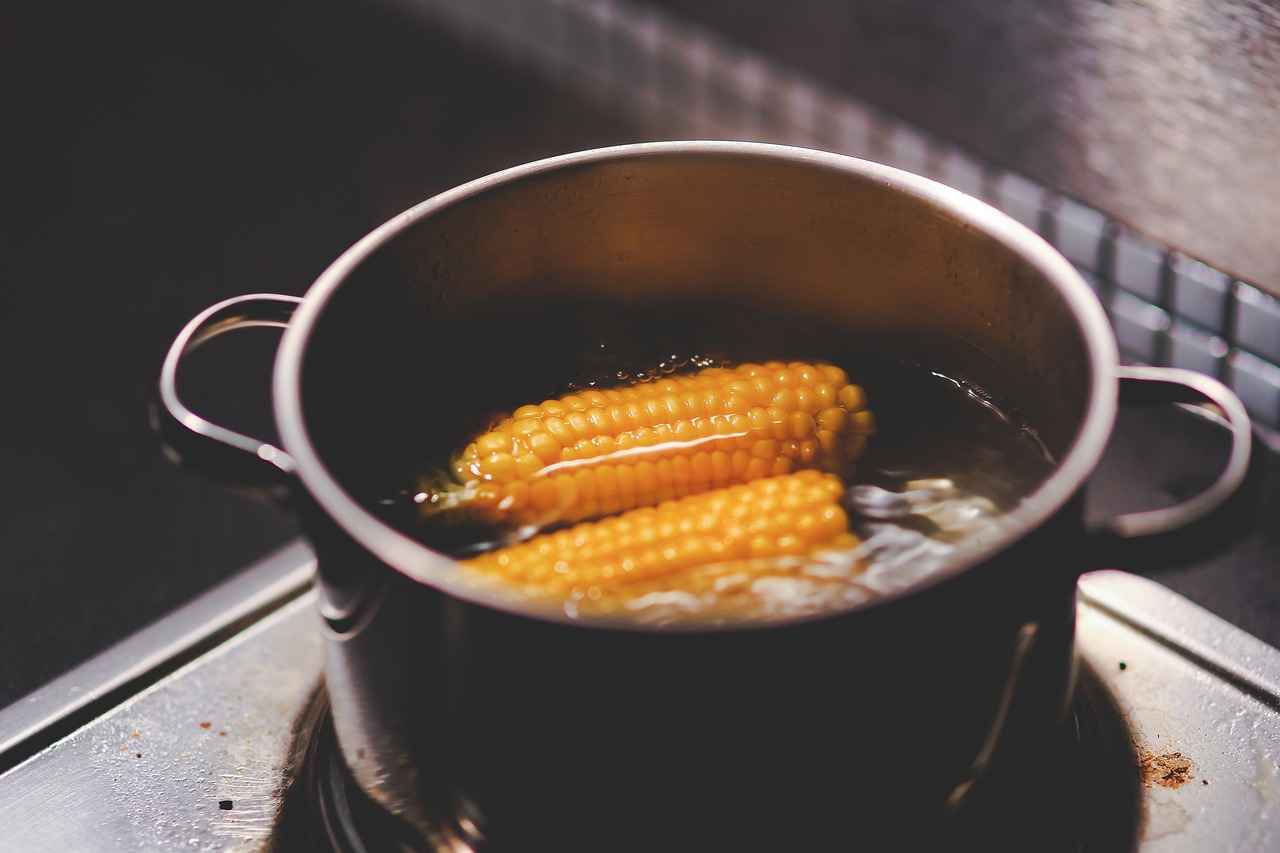
Real-World Applications of Boiling Water Knowledge
are vast and varied, impacting multiple fields from culinary arts to scientific research and industrial applications. Understanding how boiling water functions not only enhances cooking techniques but also provides critical insights for experiments and manufacturing processes.
Cooking Techniques that Benefit from Boiling Knowledge
- Blanching: This method involves briefly boiling fruits or vegetables to preserve color and texture. Knowing the optimal boiling time and temperature is essential for achieving the best results.
- Steaming: Utilizing boiling water to create steam is a popular cooking method that maintains nutrients in food. Understanding the boiling point helps in timing and ensuring proper cooking.
- Pasta and Rice Cooking: Boiling water is fundamental in cooking pasta and rice. The right temperature and timing can significantly influence the final texture of these staples.
Scientific Experiments Involving Boiling Water
In scientific research, boiling water serves as a crucial component in various experiments. For example:
- Thermodynamics Studies: Boiling water is often used to demonstrate principles of heat transfer and energy conversion. Understanding how water transitions from liquid to gas provides insight into energy dynamics.
- Phase Change Experiments: Researchers frequently utilize boiling water to study phase changes, such as evaporation and condensation, which are fundamental concepts in physics and chemistry.
- Biological Experiments: Boiling water is used in sterilization processes, ensuring that lab equipment is free from contaminants, which is vital for accurate experimental outcomes.
Industrial Processes Utilizing Boiling Water
The industrial sector also relies heavily on the principles of boiling water. Some applications include:
- Food Processing: In the food industry, boiling water is essential for pasteurization, a process that kills harmful bacteria without compromising food quality.
- Power Generation: In many power plants, water is boiled to produce steam, which drives turbines to generate electricity. Understanding the efficiency of boiling processes is critical for optimizing energy production.
- Chemical Manufacturing: Boiling water is often involved in chemical reactions that require specific temperatures to proceed. Knowledge of boiling points helps in designing effective chemical processes.
Practical Insights for Everyday Use
For everyday cooking and scientific endeavors, understanding boiling water can lead to better practices and outcomes. Here are some practical tips:
- Monitor Temperature: Use a thermometer to ensure water reaches the desired temperature for specific cooking methods.
- Use Appropriate Cookware: Different materials conduct heat differently. Choose cookware that enhances boiling efficiency.
- Experiment with Lids: Cover pots to trap heat and reduce boiling time, which can be especially useful in high-altitude cooking.
In summary, the knowledge of boiling water extends far beyond the kitchen. It plays a pivotal role in scientific research and various industrial applications. By understanding the principles and applications of boiling water, individuals can enhance their culinary skills, contribute to scientific advancements, and improve industrial processes.
Cooking Techniques that Benefit from Boiling Knowledge
Cooking techniques often rely on the fundamental principles of boiling to achieve optimal results. Understanding how to effectively utilize boiling methods can significantly enhance the quality and flavor of various dishes. In this section, we will explore several cooking techniques that benefit from a solid grasp of boiling knowledge, particularly methods like blanching and steaming.
- Blanching
- Steaming
- Boiling Pasta
- Making Stocks and Broths
- Cooking Rice and Grains
Blanching is a cooking technique that involves briefly immersing food in boiling water, followed by rapid cooling in ice water. This method is particularly useful for vegetables, as it helps preserve their vibrant colors and nutrients. The boiling process softens the food slightly, making it easier to peel or prepare for freezing. For instance, blanching tomatoes before peeling them is a common culinary practice that enhances efficiency in meal preparation.
Steaming is another cooking method that benefits from a thorough understanding of boiling. This technique uses the steam produced from boiling water to cook food gently. Steaming is considered a healthier cooking option because it retains more nutrients compared to boiling. Foods like fish, vegetables, and dumplings can be perfectly cooked through steaming, resulting in tender textures and enhanced flavors. The key to successful steaming lies in maintaining the right temperature and ensuring that the water is boiling consistently.
Boiling is essential when cooking pasta. The right boiling technique ensures that pasta is cooked evenly and achieves the desired al dente texture. It is important to use a large pot of water and to add salt to enhance flavor. The boiling process also helps in preventing the pasta from sticking together. Understanding the timing and the water-to-pasta ratio can elevate the quality of your pasta dishes significantly.
Stocks and broths are foundational elements in many cuisines, and their preparation heavily relies on boiling. The process involves simmering bones, vegetables, and herbs in water to extract flavors. Achieving the right boiling temperature is crucial for drawing out the essence of the ingredients without making the broth cloudy. A gentle boil allows for a clearer stock, which is essential for high-quality soups and sauces.
Cooking rice and other grains often involves boiling water before adding the grains. The boiling process ensures that the grains cook evenly and absorb the right amount of moisture. Different types of rice may require varying boiling times and water ratios, so understanding these specifics can lead to perfectly cooked grains every time. Techniques like the absorption method or the pasta method can be utilized, both of which hinge on effective boiling.
In summary, mastering boiling techniques is essential for various cooking methods. Whether you are blanching vegetables, steaming fish, or making a flavorful broth, understanding the science behind boiling can significantly impact the outcome of your dishes. These cooking techniques not only enhance flavor and texture but also contribute to healthier meal preparations. By applying the principles of boiling effectively, you can elevate your culinary skills and enjoy a wide array of delicious, well-prepared dishes.
Scientific Experiments Involving Boiling Water
Boiling water is not just a routine task in the kitchen; it serves as a fundamental aspect of numerous scientific experiments. Understanding the behavior of water when it reaches its boiling point can provide valuable insights into the principles of thermodynamics and phase changes. In this section, we will delve into the significance of boiling water in various scientific contexts, highlighting its role in both educational and practical applications.
Boiling water is a clear demonstration of how heat energy affects molecular movement. When water is heated, its molecules gain energy, which increases their movement. Once the temperature reaches 100 degrees Celsius (at sea level), the water transitions from a liquid to a gas, illustrating a crucial phase change. This phenomenon is not only vital in cooking but also serves as a key concept in scientific research.
In scientific experiments, boiling water is often used to explore the laws of thermodynamics. For instance, researchers may examine how heat transfer occurs between water and its environment. By studying the rate at which water boils under different conditions, scientists can gain insights into energy efficiency and heat capacity. These principles are essential in fields ranging from environmental science to engineering.
The transition of water from liquid to gas is a prime example of a phase change, which is a critical concept in physical chemistry. Experiments that involve boiling water can help illustrate how different factors, such as pressure and temperature, influence these changes. Understanding these dynamics is crucial for applications in fields like meteorology, where the behavior of water vapor plays a significant role in weather patterns.
Boiling water is frequently employed in laboratory settings for various purposes:
- Sterilization: Boiling water is a common method for sterilizing equipment and materials, ensuring that no harmful microorganisms are present.
- Extraction Processes: In chemistry, boiling water is often used to extract soluble compounds from plant materials, facilitating the study of their properties.
- Temperature Calibration: Scientists use boiling water to calibrate thermometers and other temperature-sensitive instruments, ensuring accuracy in measurements.
In educational settings, boiling water serves as a hands-on tool for teaching fundamental scientific concepts. Experiments involving boiling water can engage students in learning about:
- Heat Transfer: Students can observe how heat is transferred through conduction and convection, enhancing their understanding of thermal dynamics.
- Chemical Reactions: Many chemical reactions require specific temperatures to proceed, and boiling water can be used to achieve these conditions.
- Safety Protocols: Working with boiling water also teaches students about laboratory safety and the importance of handling hot substances with care.
In summary, boiling water is a versatile component in scientific experiments, offering insights into thermodynamics, phase changes, and various practical applications. Its role extends beyond the kitchen, influencing educational practices and research methodologies. By understanding the principles surrounding boiling water, scientists and students alike can enhance their grasp of essential scientific concepts.
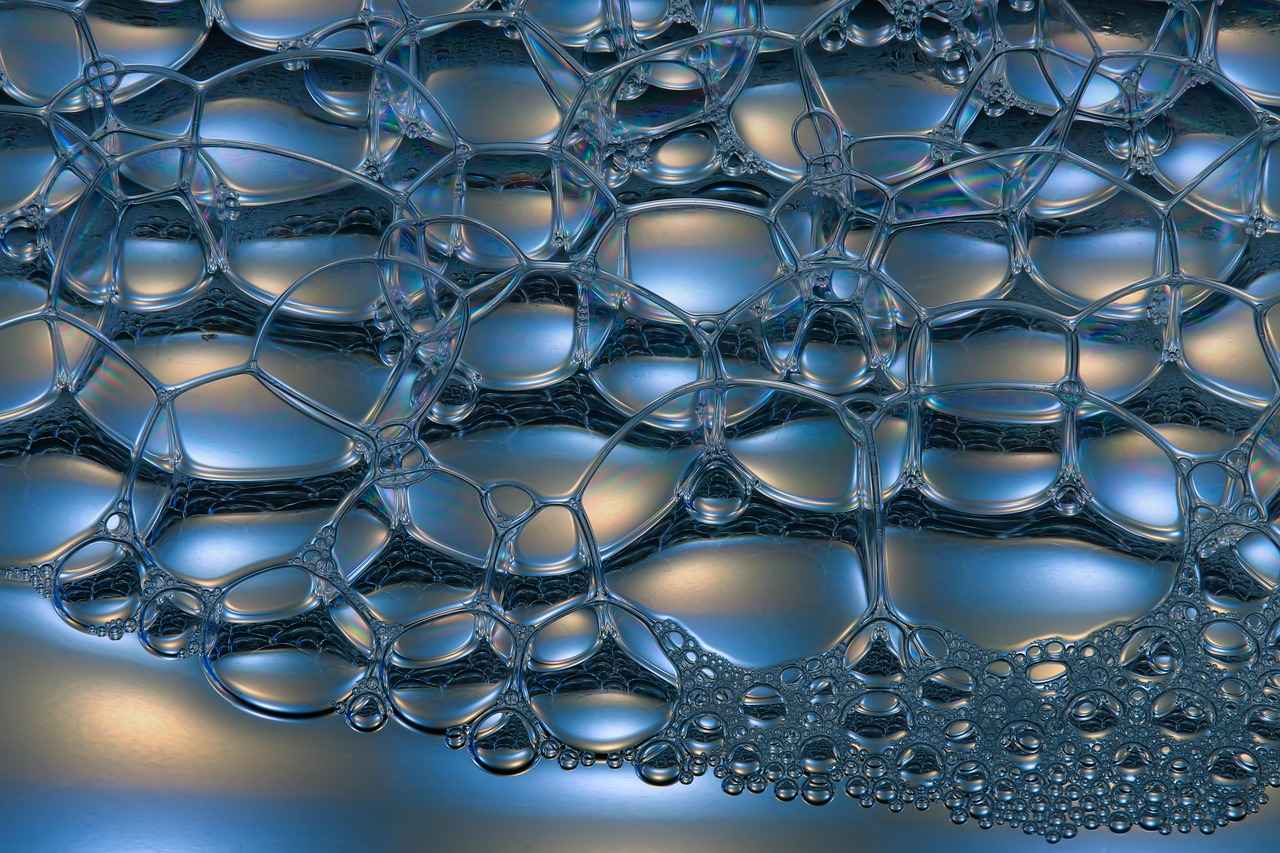
Final Thoughts on Boiling Water
In the realm of cooking and scientific experimentation, the ability to understand the principles of boiling water can significantly enhance efficiency and outcomes. By grasping the scientific concepts underlying the boiling process, individuals can make informed decisions that optimize both culinary techniques and experimental procedures.
Boiling water is not just a simple task; it involves a fascinating interplay of temperature, pressure, and energy transfer. Understanding these elements can lead to more effective cooking methods and a deeper appreciation for the science behind everyday actions.
Temperature is a key factor that influences how quickly water reaches its boiling point. When water is heated, its molecules gain energy and move more rapidly. This increase in molecular motion is crucial, as it directly affects the rate at which water transitions from a liquid to a gas. Warm water, having already absorbed some heat, typically reaches the boiling point faster than cold water.
Various mechanisms of heat transfer—conduction, convection, and radiation—play significant roles in the boiling process. Conduction occurs when heat is transferred through direct contact, such as between the pot and the stove. The effectiveness of this process can vary based on the materials used in cookware.
Convection, on the other hand, involves the movement of water molecules, creating currents that enhance heat distribution. This dynamic can greatly influence boiling rates, making it essential to understand how to maximize these effects in cooking.
The energy needed to raise the temperature of water to its boiling point, known as the heat of vaporization, is a critical factor. This energy requirement varies based on the starting temperature and purity of the water. By considering these factors, individuals can better predict boiling times and adjust their methods accordingly.
Many misconceptions exist regarding the boiling process, including the belief that cold water boils faster than warm water. This notion is largely a myth; scientific evidence consistently shows that warm water reaches boiling point more quickly. Understanding these misconceptions can help individuals avoid common pitfalls in cooking and scientific applications.
Several external factors can significantly affect boiling times, including altitude, the purity of water, and the type of heat source. At higher altitudes, for example, the boiling point of water decreases due to lower atmospheric pressure, which can complicate cooking processes.
- Choose the Right Cookware: The material and design of cookware can impact heat retention and distribution.
- Cover the Pot: Using a lid traps heat and steam, significantly reducing boiling time.
- Preheat Water: Starting with warm water can cut down on cooking time.
Understanding the principles of boiling water extends beyond the kitchen. In scientific experiments, boiling water is often used to demonstrate principles of thermodynamics and phase changes. Recognizing how these principles apply can lead to better experimental design and outcomes.
In summary, a thorough understanding of the scientific principles behind boiling water equips individuals with the knowledge to make better choices in both cooking and scientific exploration. By applying these insights, one can achieve greater efficiency and success in various endeavors.
Frequently Asked Questions
- Does warm water boil faster than cold water?
Yes, warm water generally boils faster than cold water. This is because warm water is already closer to its boiling point, requiring less energy to reach that temperature.
- What factors affect boiling time?
Several factors can influence boiling time, including altitude, the purity of the water, the type of cookware used, and whether a lid is placed on the pot.
- Is it a myth that cold water boils faster?
Absolutely! The belief that cold water boils faster is a common misconception. Scientific evidence shows that warm water reaches boiling point more quickly.
- How can I boil water more efficiently?
To boil water more efficiently, use a pot with a lid to trap heat, choose the right cookware for better heat distribution, and consider using a higher heat source.
- What role does heat transfer play in boiling?
Heat transfer mechanisms, such as conduction and convection, are crucial in boiling. They determine how effectively heat is applied to the water, impacting the speed at which it boils.

